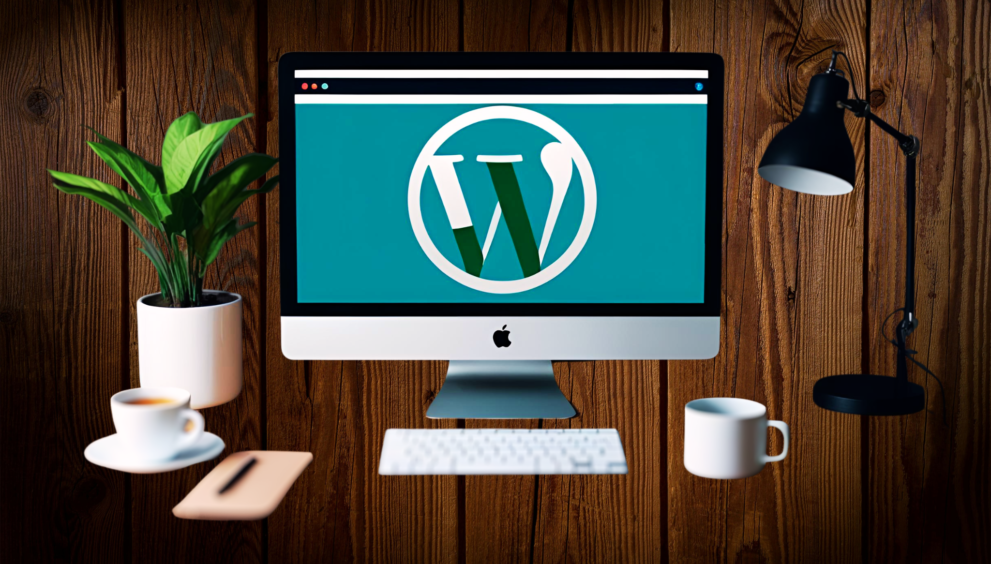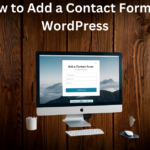Creating a blog can be an effective way of sharing your interests, establishing a brand, or expanding a business. WordPress is an excellent option among blogging platforms. Why? Because it is flexible, easy to use, and you can customize it forever. Whether you are a newbie wanting to dabble in blogging or a small business wanting to establish your web presence, WordPress is the right place to begin.
After reading this guide, you will know exactly how to set up a blog on WordPress, from picking a domain name to marketing your first post. Let’s get started!
Step 1: Picking A Domain Name
Your blog’s domain name is basically its address on the web. It’s what people will first see of your site, so make it count. A few important reminders to consider are:
What Is a Good Domain Name?
- Keep It Short: It is easier to type and remember a domain name that is short. Do not use complicated spelling and obscure words.
- Make It Relevant: Define your niche with your name: A lifestyle, fitness, or small business blog. This would be something like TastyTable if you are a food blogger. com might resonate.
- Prioritize: .com: There are plenty of domain extensions (such as .net, .blog, or .co). However, com is by far the most trusted and recognizable.
Where to Get a Domain Name
You can buy domain names through providers such as GoDaddy, Namecheap, or through your hosting provider directly (we’ll get into hosting soon).
Step Two: Web Hosting Setup
Web hosting is what allows your blog to be seen on the internet. It’s like renting a place where you can host your blog. Next, Prospect for Hosting—There are a number of hosting options to explore.
Types of Hosting
Shared Hosting: Best for startup businesses. Your website also shares a space with other websites, which makes it inexpensive. You can try Bluehost and SiteGround.
WordPress Hosting: Specialized for WordPress blogs It’s faster, more secure and managed by people who know what they’re doing, but it’s a little more expensive. Consider providers such as Kinsta or WP Engine.
VPS/Dedicated Hosting: For power users with busy sites.
How to Choose the Right Host
- Seek Out 24/7 Support: The last thing you want is to be stuck in the Google rabbit hole at 4 a.m.
- What you want to do is make sure your hosting is reliable, meaning maximum uptime.
- Think about pricing and scalability: You may want to start on a budget with inexpensive hosting, but make sure your plan can grow along with your blog.
Once you find your hosting provider, you can usually buy both hosting and your domain name together just to keep it easy.
Step 3: Installing WordPress
With a domain name and hosting in place, it’s time to install WordPress.
One-Click Installation
Almost all popular hosting providers (like Bluehost and SiteGround) provide one-click WordPress installation. Here’s how to take action in just a few minutes:
- Access your hosting account dashboard.
- Search for a utility called “Install WordPress” or “Website Installer.”
- Provide your blog name, username, and password to sign up.
- Click Install.
You can also install WordPress manually, but it is much easier to do it in one click, which is what we would recommend to most beginners.
Step 4: Selecting a Theme
The theme you choose is what gives your blog its look and feel. It’s the design structure that helps you make your blog look beautiful and intuitive.
How to Choose the Right Theme
- Responsive Design: Ideally, it should work beautifully on desktop and mobile!
- Well-suited for Plugins: Not all themes click with important plugins. Use a theme that is compatible with popular WordPress addons.
- Personalized: Find themes that come with customizable colors, fonts, and layouts.
Where to Find Themes
Free Themes: Use the WordPress Theme Directory for beginner-friendly free themes such as Astra or Twenty Twenty-Three.
Commercial Themes: These are paid-for themes (e.g., available from ThemeForest or Elegant Themes) that often come with enhanced design features and support.
Then, to install a theme, navigate to your WordPress dashboard, choose Appearance > Themes, and click “Add New.”
Adding Most Important Plugins
Plugins are basically stained additions to your blog—they extend common functionalities such as SEO tools and social sharing buttons. If you are a new blogger, here are some of the must-have plugins:
Recommended Plugins
- Yoast SEO: Optimize your posts and pages for search engines.
- Wordfence Security: Another great way to keep hackers and other threats at bay from your blog.
- Akismet: Automatically checks comments and contact form submissions against a global database of spam, helping you prevent your site from publishing malicious content.
- Page Builder by SiteOrigin: A simple and easy content body layout.
- WP Super Cache — caches your pages to improve how fast they load.
Best of all, you can search for plugins in your WordPress dashboard (Plugins > Add New).
Step 6: The First Post: Write Post
Now that your blog is established, it’s time to write and publish content.
How to Publish a Blog Post With WordPress
- Now, head to your WordPress dashboard and navigate to Posts > Add New.
- Write a title for your post They are 100 characters long
- Compose your material right in the editor (or copy and paste it from a Word doc).
- Click on the formatting tools to add images and links and make headings.
- Click Preview to see how it will look and make sure it comes out all right.
- When ready, click Publish.
Not sure what you should write about? Begin with a bio of who you are and why you’re blogging. Tell us what your goals and passions are and what readers can expect.
Step 7: Promoting Your Blog
Building a great blog is only half the battle. You will have to promote it strategically to attract readers.
Promotion Tips
- Outline your blog links on Instagram, Facebook, LinkedIn or Twitter.
- Join the Blogging Community: Participate in your niche on forums, Facebook groups, or subreddit threads.
- Promote via Email List: Update your subscribers with a new blog post. Mailchimp is one of the tools you can use to help you get started.
- SEO is important: Use the Yoast SEO plugin to find low-competitive keywords and rank them.
The Ultimate Guide On How to Start a Blog (Step-by-Step)
Starting a blog on WordPress can look like a daunting task, but not if you follow these steps; you will be up and ready in no time! Now that you’ve got your domain name, hosting, theme, and first post all set up, the world of blogging is at your fingertips.



